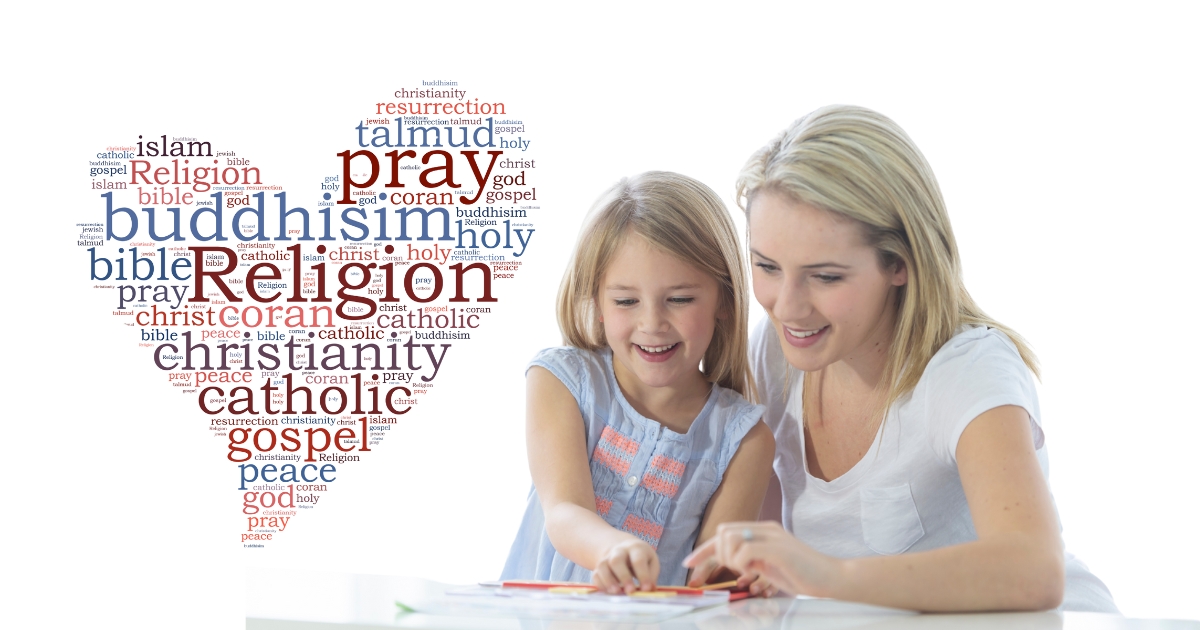Homeschooling gives families a unique opportunity to design education tailored to their values, beliefs, and traditions. For many families, religion plays a central role, and incorporating it into the homeschooling curriculum can enrich learning on multiple levels. Religion isn’t just about faith or spirituality; it connects with moral development, critical thinking, history, and culture.
The key is knowing how to seamlessly integrate religion into homeschool studies in a way that aligns with both educational and spiritual goals. Here’s a practical guide to help you.
Why Religion Fits Into Homeschool Studies
Religion offers a wealth of learning opportunities that go beyond spirituality. It shapes values, helps children understand their place in the world, and even aids in character formation. Here’s why it’s a valuable addition to your homeschool curriculum:
- Moral and Ethical Foundations
Religion introduces children to values like kindness, honesty, and generosity. These principles lay the groundwork for navigating life with integrity and compassion. Whether it’s through Biblical parables, teachings from the Quran, or other faith-based stories, morals easily tie into daily lessons. - Understanding History and Culture
Religion often influences historical events, art, and literature. Teaching about different faiths or focusing on your own religion helps children grasp the global impact of belief systems. For instance, the Reformation, the Crusades, or even the Civil Rights Movement can be better understood by analyzing their religious underpinnings. - Critical Thinking Development
Connecting spiritual ideas with broader concepts nurtures analytical thinking. Children gain understanding through discussions on the coexistence of science and faith or exploring debates on religious philosophy.
Through these connections, religion becomes a natural part of a student’s learning experience.
Steps to Seamlessly Integrate Religion into Your Homeschool Curriculum
Integrating religion into your homeschool studies is a thoughtful process. It involves intentional planning and creativity to balance academic and spiritual learning. Below are actionable steps to help:
1. Define Your Goals
Start by identifying your priorities for teaching religion at home. Are you focusing on doctrinal understanding, character-building, or comparative study? Clearly defined goals will shape your curriculum.
Consider the following questions:
- What religious values are important for your family?
- How can these values align with your child’s learning stages?
- Will you focus on one faith, or include lessons on different religions?
Having a clear vision will make planning easier.
2. Make Religion Part of Your Daily Routine
Consistent exposure reinforces learning. Consider incorporating religion into daily homeschool activities, such as:
- Starting the day with a devotion, prayer, or reflection.
- Reading a verse or parable at the start of language arts lessons.
- Setting aside a specific time each week for deeper religious study.
Small, consistent practices ensure that spiritual lessons become a natural part of your everyday routine.
3. Incorporate Religion Into Core Subjects
Religion doesn’t have to stand alone as a subject. It can easily blend with core areas such as:
- History: Study how religion influenced events and cultural movements (e.g., the role of Christianity in the abolition of slavery).
- Science: Explore the intersection of faith and science through discussions on creation, the universe, and moral implications of scientific advancements.
- Art and Music: Analyze religious art, architectural wonders like cathedrals, or spiritual songs to connect faith with creative expression.
- Literature: Read religious texts or faith-inspired poetry to add depth to language studies.
By connecting religion to existing subjects, learning becomes multidimensional and engaging.
4. Rely on Age-Appropriate Activities
An effective religious curriculum considers the developmental stage of each child. Customize activities based on their age and ability:
- For Younger Children:
- Create crafts based on religious stories or holidays (e.g., making a Noah’s Ark diorama).
- Use songs and role-play to bring characters from religious teachings to life.
- Choose picture books with simplified faith-based lessons.
- For Older Children:
- Host debates or discussions on themes like morality or faith’s impact on modern society.
- Assign essays or projects tied to religious concepts, such as exploring charity work inspired by faith.
- Introduce themes of leadership, resilience, or justice through the study of religious figures.
Adapt materials and methods to ensure lessons stay relevant as children grow.

5. Focus on Values and Character Building
Religious studies naturally lend themselves to character education:
- Choose themes like honesty, patience, or gratitude to guide lessons.
- Relate these values to real-life situations, discussing how to practice them daily.
- Use stories or parables to demonstrate virtues and ask children to reflect on their own experiences.
Carry these lessons into your family’s daily life by rewarding examples of these values in action (e.g., acts of kindness or responsibility).
6. Engage in Faithful Discussions
Open discussion is vital for integrating religion into learning. Encourage children to ask questions and share their interpretations. Discuss:
- How religious principles apply to current events.
- Ethical dilemmas viewed through a faith-based lens.
- The shared values across different belief systems to foster empathy and understanding.
This approach doesn’t just enhance their knowledge but sharpens their critical-thinking skills.
7. Leverage Multisensory Learning
Use a variety of teaching tools to make lessons engaging:
- Artistic activities like sketching stained glass windows or designing calligraphy inspired by faith.
- Hands-on projects such as building models of religious landmarks.
- Multimedia materials like documentaries, podcasts, or videos to explore spiritual themes in a modern context.
Multisensory learning ensures children absorb lessons in meaningful ways.
Selecting the Right Resources for Religious Education
Quality resources help enhance religious studies in homeschool settings. With so many options available, here’s how to choose effectively:
Curriculum Options
Many publishers specialize in faith-based curricula that combine academics with spiritual learning. Examples include:
- Christian Curricula: Programs like “Apologia” or “My Father’s World” offer comprehensive lesson plans rooted in Christian principles.
- Other Faith-Based Resources: Look for tailored programs aligned with your chosen tradition, whether Islamic, Jewish, Hindu, or others.
Online Tools
The internet provides access to an array of interactive resources:
- Online scripture platforms like Bible Gateway or Quran Explorer.
- Apps that offer daily devotionals or interactive learning games for kids.
- Virtual classes or webinars on theology and ethics.
These tools offer convenience and flexibility for modern homeschool environments.
Community Support
Connect with other homeschooling families through:
- Online forums and social media groups where parents share lesson ideas and experiences.
- Local co-op groups that often pool resources or create joint study opportunities.
Collaborating with others opens the door to fresh ideas and shared materials.
Library and Multimedia Resources
Explore your local library to borrow:
- Historical or cultural books on religious traditions.
- Audiobooks and DVDs exploring theology and history.
- Picture books or story collections for younger learners.
Using diverse materials keeps lessons both comprehensive and engaging.
Fostering Growth through Religion
Teaching religion in homeschool studies reaches beyond academic knowledge. It encourages intellectual growth, moral development, and a deep connection to faith. By tying spirituality to lessons in history, science, literature, and art, children learn to view the world through a holistic lens.
Whether focusing on your family’s faith or exploring others, the integration of religion fosters respect, critical thinking, and understanding. Keep the dialogue engaging and encourage reflection in a way that allows every child to express their thoughts. This balanced approach ensures that students grow as thoughtful, well-rounded individuals prepared to connect their values with the world around them.



